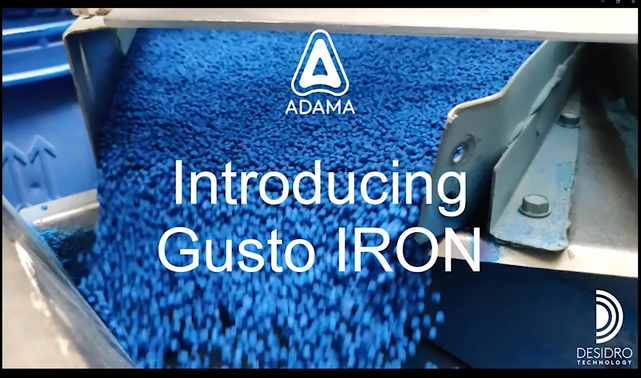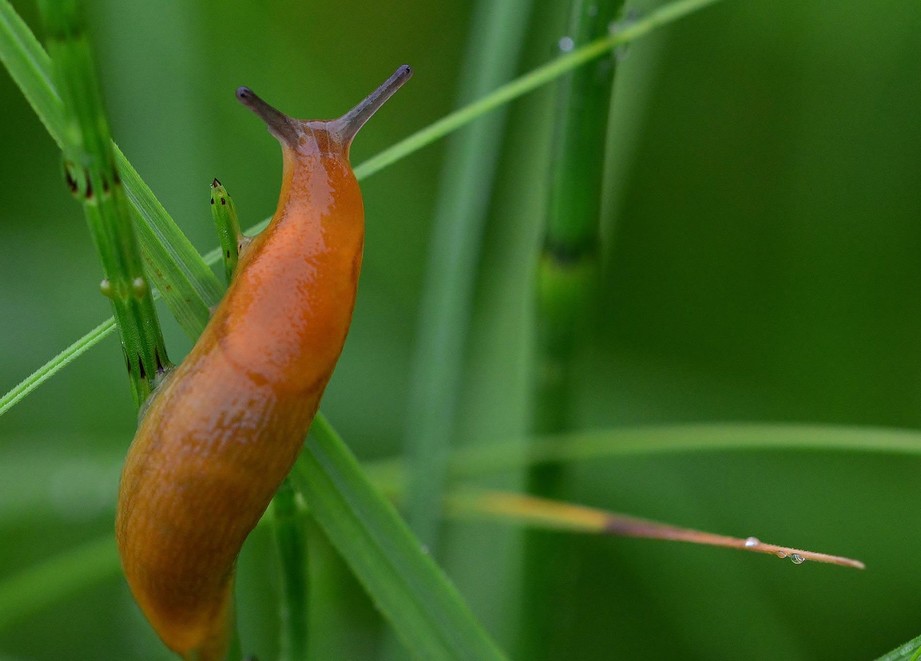
Slug Control
The obvious choice for cost-effective slug control
Gusto® IRON is an excellent value 2.94% ferric phosphate molluscicide for use in cereals and a wide range of other crops. The pellets offer advantages over other ferric-based molluscicides and retain their distinctive blue colour for longer.
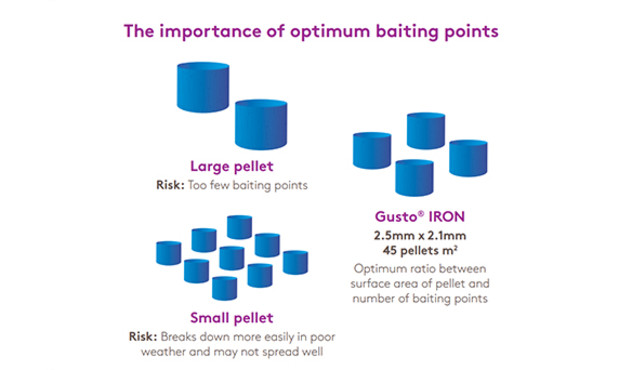
Key Features and Benefits

Desidro™ formulation

Rain and mould resistance

Optimum baiting points

Excellent spread
Superior mould resistance
- An independent trial showed that ADAMA’s wet processed Gusto IRON slug pellets retain their shape, colour and palatability for longer compared to other leading brands.
- The ADAMA pellets also remained mould-free for longer.
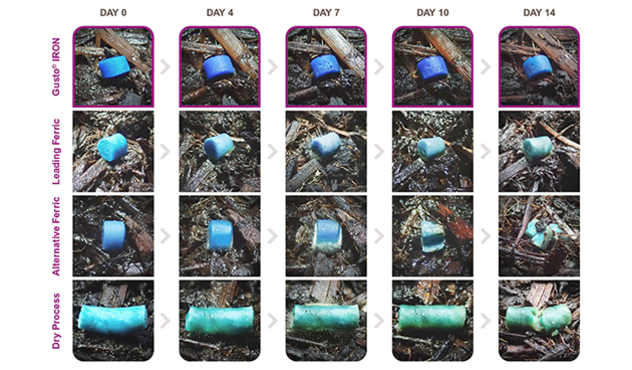
Desidro Technology
The DesidroTM manufacturing system uses a two-stage drying technique which dries the wet processed pellets from the inside before gently drying the exterior. This ensures an ideal balance between persistence and palatability, with Gusto® IRON pellets proving hard enough to ensure excellent weather resistance, but also remaining palatable to slugs even when first applied.
The DesidroTM process also ensures excellent ballistic characteristics for an accurate spreading pattern and baiting point density.

Effective slug control

Integrated Pest Management

What does IPM involve?
Risk factors
Moisture and temperature
Slug activity, survival and reproduction are all dependent on moisture. Whilst the optimum temperature is 17°C, the grey field slug can still be active close to freezing; other species are only active in temperatures above 5°C.
Heavy Soils
Soils with a high clay and/or silt content tend to retain more moisture and also become cloddy. Slugs are more prevalent on these soil types particularly where cloddy soils are more open, therefore allowing slugs to graze on seed or newly emerging shoots.
Previous cropping
The risk of slug damage to winter wheat is much greater following a dense, leafy crop (such as oilseed rape) which has provided a moist, shaded environment and food for populations to build. It is also worth noting that cover crops grown over winter can increase the slug risk to the following spring cereal crop for the same reasons.
Crop residues, organic matter and weeds
These all amplify the risk of slug activity as they increase soil moisture retention and provide a source of food.
Direct drilling and delayed drilling
Both of these practices increase the risk of slug damage. Generally speaking, autumn planted crops are more at risk although a cold, delayed spring can also increase the risk to spring crops.
Seedbed preparation
Open and cloddy seedbeds allow slugs to move around easily and to access seed and emerging seedlings. Rolling cloddy seedbeds after drilling will help to reduce the potential for slug movement, but only if sufficient moisture is there to breakdown and consolidate clods.
Other agronomic conditions
Lack of soil nutrients, poor drainage, weed competition and cold weather can all result in prolonging the period of seed germination and crop establishment thus extending the period when crops are vulnerable to slug damage.
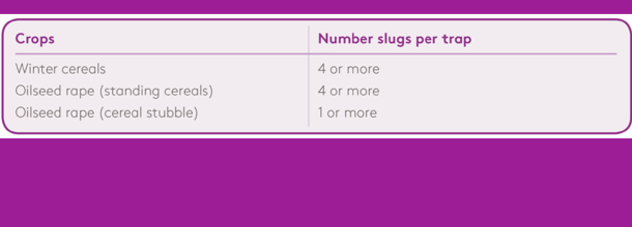
Slug Trapping
The best time to monitor slug populations is when the weather is mild and soil is damp. The most effective method is to use refuge shelters/traps. Each trap should consist of a tile or hardboard sheet or plant pot saucer of c.25-30cm diameter or square to provide a sheltered refuge where slugs will gather. Each trap should be baited with a food source to attract slugs (chicken layers’ mash is recommended – around two heaped teaspoonfuls per trap). IMPORTANT: do not use slug pellets for this purpose.
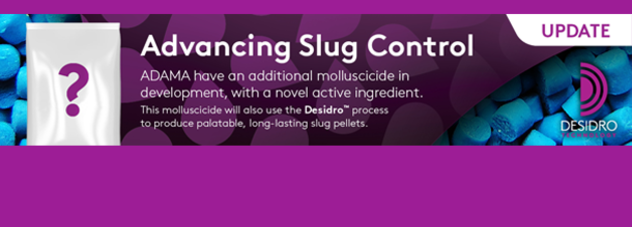
Slug Trapping cont.
In each field, nine traps (13 in fields >20ha) should be set out in a W pattern, with the traps concentrated in areas known to suffer damage. The above thresholds indicate a risk when soil and weather conditions favour slug activity. Slug pellets should only be applied when the relevant threshold level has been reached.
